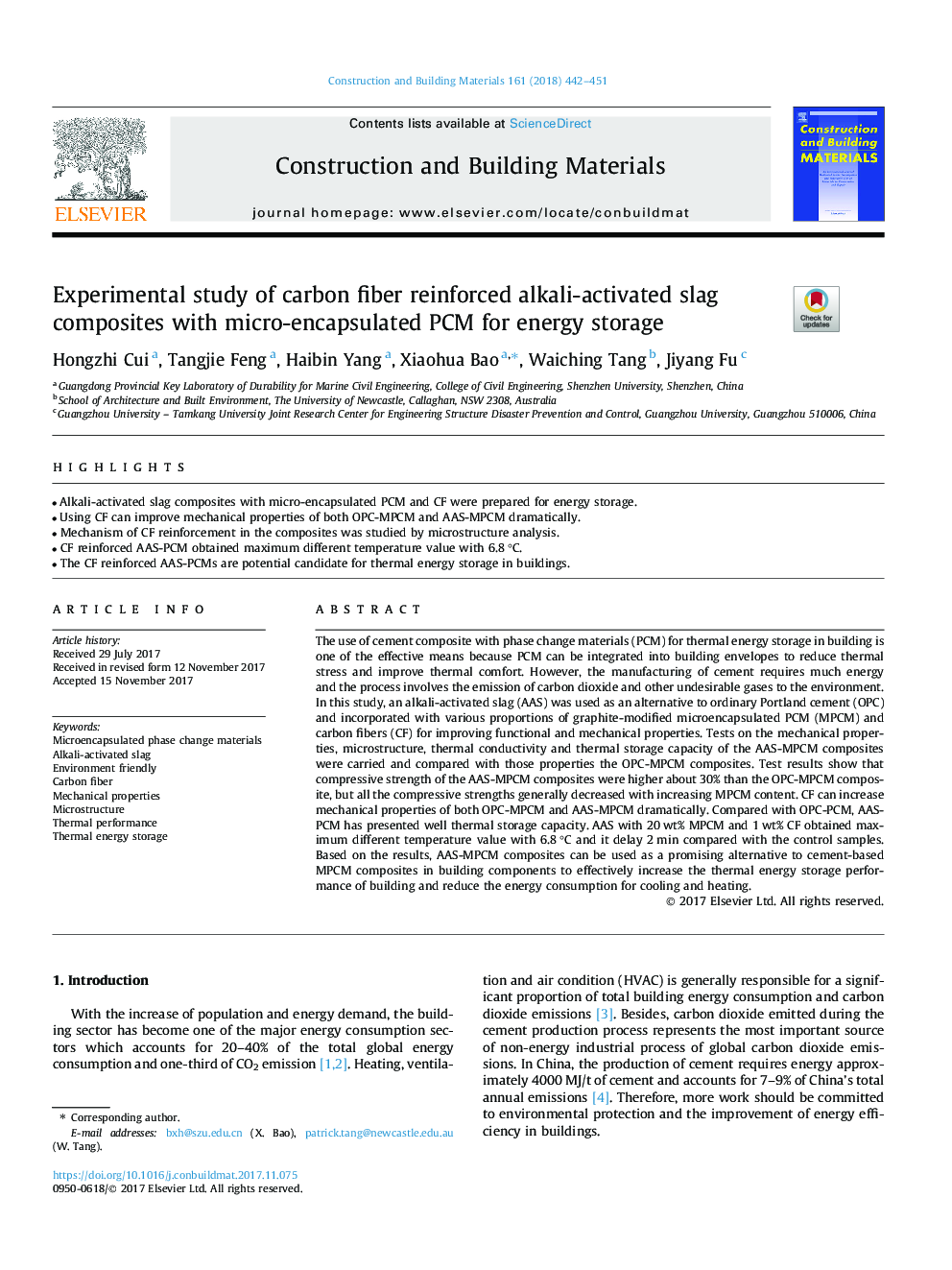| Article ID | Journal | Published Year | Pages | File Type |
|---|---|---|---|---|
| 6716831 | Construction and Building Materials | 2018 | 10 Pages |
Abstract
The use of cement composite with phase change materials (PCM) for thermal energy storage in building is one of the effective means because PCM can be integrated into building envelopes to reduce thermal stress and improve thermal comfort. However, the manufacturing of cement requires much energy and the process involves the emission of carbon dioxide and other undesirable gases to the environment. In this study, an alkali-activated slag (AAS) was used as an alternative to ordinary Portland cement (OPC) and incorporated with various proportions of graphite-modified microencapsulated PCM (MPCM) and carbon fibers (CF) for improving functional and mechanical properties. Tests on the mechanical properties, microstructure, thermal conductivity and thermal storage capacity of the AAS-MPCM composites were carried and compared with those properties the OPC-MPCM composites. Test results show that compressive strength of the AAS-MPCM composites were higher about 30% than the OPC-MPCM composite, but all the compressive strengths generally decreased with increasing MPCM content. CF can increase mechanical properties of both OPC-MPCM and AAS-MPCM dramatically. Compared with OPC-PCM, AAS-PCM has presented well thermal storage capacity. AAS with 20â¯wt% MPCM and 1â¯wt% CF obtained maximum different temperature value with 6.8â¯Â°C and it delay 2â¯min compared with the control samples. Based on the results, AAS-MPCM composites can be used as a promising alternative to cement-based MPCM composites in building components to effectively increase the thermal energy storage performance of building and reduce the energy consumption for cooling and heating.
Keywords
Related Topics
Physical Sciences and Engineering
Engineering
Civil and Structural Engineering
Authors
Hongzhi Cui, Tangjie Feng, Haibin Yang, Xiaohua Bao, Waiching Tang, Jiyang Fu,
